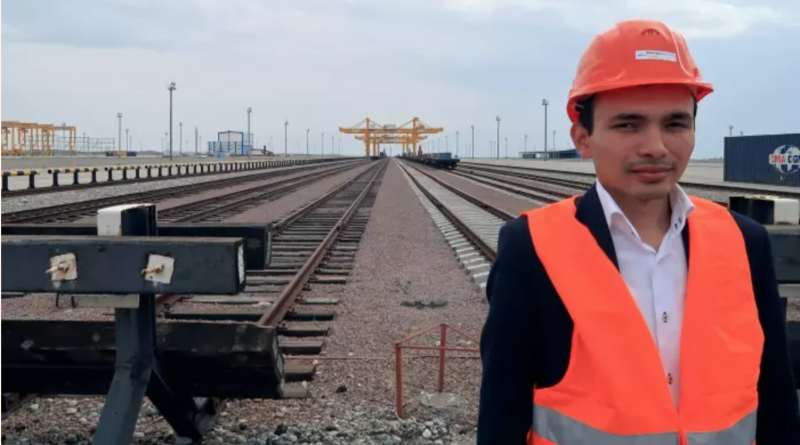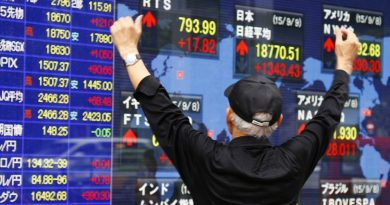(FT) China-Kazakhstan border woes dent Silk Road ambitions
By Emily Feng
Soaring mountains and golden plains surround the nascent city of Khorgos, one of the most important land transport hubs planned for China’s new Silk Road.
But despite hundreds of millions of dollars of investment, the majority of traders here on China’s border with Kazakhstan, among the planet’s furthest points from the ocean, still rely on maritime routes to receive imported goods.
“I would rather my goods take 10 times as long to get to Khorgos but be sure they arrive on time,” says Jia Xiubing, who imports European snacks through the Chinese ports of Qingdao and Tianjin, which lie about 4,000km east by road or rail. Traders say Khorgos’s showpiece free trade zone is blighted by chronic delays, high costs and limits on what can be imported.
With investments ranging from ports in Pakistan and Sri Lanka to high-speed railways in east Africa to gas pipelines crossing central Asia, China’s $900bn Belt and Road Initiative is arguably the largest overseas investment drive ever launched by a single country.
But the problems, along with other logistical difficulties of transporting goods through central Asia to Europe, illustrate the shaky ground beneath China’s ambitious plans to boost its global influence and bolster slowing economic growth at home.
Khorgos is a crucial hub in the transport network linking China and Europe. By 2020 it will house the world’s largest “dry port”, where 4m tonnes of goods a year can be stored and transferred between Chinese and Kazakh trains, which run on a different gauge.
However, it is one of China’s slowest outbound border crossings. Goods take an average of 10.6 hours to cross into Kazakhstan — almost twice as long as those moving in the opposite direction, according to the Central Asia Regional Economic Co-operation (Carec) programme, a trade organisation.
“Customs processes are actually very fast on the China side. It is getting goods through the Kazakh side that can be very unpredictable and costs twice as much in customs fees,” says Alim, a Chinese Uighur confectionery trader.
Most goods have to be unloaded and stored in bonded warehouses, sometimes for days, as they await clearance from the customs regimes either side of the border. The cost of unloading train cargo remains the highest among trade corridors Carec monitors, putting Khorgos among central Asia’s most expensive border crossings.
And the problems are not limited to Khorgos, which lies in the Chinese frontier region of Xinjiang that borders three central Asian nations.
A free-trade zone set to open this year in the regional capital of Urumqi has been delayed “because the local government has not been able to decide on logistics operations and a customs regime with partners”, according to a zone employee who declined to be named because of a lack of authorisation to discuss the matter.
Jonathan Hillman, a fellow at the Center for Strategic and International Studies in Washington, says: “More efficient border procedures will be key — even more important than building new roads.”
Kazakh officials deny that shipments from China pass into Kazakhstan more slowly than into other countries and the government in Astana remains bullish on bilateral ties. Cross-border trade between the two countries increased a hundredfold in the five years to 2016 and is on track to double this year to 200,000 containers a year, according to Kazakhstan’s foreign ministry. Kazakh officials say their country accounts for 70 per cent of China-Europe transit traffic.
“The government of Kazakhstan wants to ensure that it continues to develop as a key transportation hub in Eurasia that plays a crucial role in connecting and enabling trade between east and west,” says Roman Vassilenko, deputy foreign minister.
But the positive sentiments are not universally shared across the border in China, where critics believe Kazakhstan has been freeriding on China’s goodwill.
Chinese development in Khorgos dwarfs that on the Kazakh side, where only 25 of 63 projects have investors, according to Ravil Budukov, the zone’s former press secretary. “China has provided all the money” for Kazakhstan’s roads and high-speed rail links, says a Chinese trade official in Xinjiang. “And we do not expect anything back.”
While Kazakhstan’s leaders have welcomed Chinese investment, analysts say the country remains deeply suspicious of Beijing’s motives.
“The larger the Chinese presence in central Asia, the stronger the anti-China sentiments,” says Daniyar Kosnazarov, of Narxoz University in Almaty, Kazakhstan’s biggest city. “Nationalist sentiments and enthusiasm for Chinese investment are living an uneasy coexistence but the ice is getting thinner and thinner.”
In April last year, thousands took to the streets over concerns about legal changes that would allow Chinese investors would buy up valuable real estate. “There is a lot of fear among Kazakhs about the country being overrun by Chinese,” says Dmitriy Frolovskiy, a Moscow-based central Asia analyst. “It has to face the world’s second economy and one of the strongest armies, which could conquer it within days.”
Kazakhstan has traditionally gravitated towards Russia, itself wary of China’s growing clout in central Asia, for political and economic patronage. A deeply Russified cultural legacy remains in the former Soviet republic, with most ethnic Kazakhs on the border using Russian, rather than Mandarin, as the lingua franca of trade.
“People are always going to look after their own interests,” says Su Gang of the Xinjiang Uighur Logistics Association, which monitors trade in the region. “That’s what we call trade protectionism.”
That extends to the Khorgos free-trade zone.
Kazakhstan, as a member of the Russia-led Eurasian Economic Union, limits imports to 50kg or €1,500 worth of undeclared goods per person per month. China, worried that cheap Kazakh imports could hurt domestic producers, bans most agricultural products from entering through the tax-free zone.
That limits all but small-scale trade from surviving in Khorgos, where buyers and sellers haggle over socks, bedding and packaged food in dimly lit malls.
This falls far short of what many traders had in mind when they set up shop, says Xiang Wu, a textile trader: “No matter how hard you work, there is a glass ceiling on how much money you can make here.”
Bribe culture threatens Silk Road dreams
Once a sleepy mountain village ringed by the tents of nomadic herders, Tashkurgan has grown rapidly in the past decade as a trade waypoint between China and Pakistan.
The Chinese town’s location has also given rise to a new side-business: skimming off customs fees on goods that pass through, highlighting the corruption that hinders China’s plan to set up trade corridors branching into central Asia and Europe.
“One needs to know someone here to get the special customs prices. The customs office is all staffed by locals from Tashkurgan and Kashgar,” a nearby city, says Abdullah, a Tajik businessman native to Tashkurgan.
Carec, a regional trade body, warns that unofficial payments remain a significant challenge to the smooth operation of all central Asian trade corridors.
“There is no set list of customs fees. One day, it will cost about 5 per cent [of the value of goods in a container], another day 20,” says Wassim Abbas, echoing sentiments of dozens of Pakistani traders who run import-export businesses throughout the region.
Traders at Khorgos, another important transit point along China’s New Silk Road stretching across Asia, also complain of being forced to pay bribes.
“Kazakhstan is like China in the 1980s. There is no rule of law, only rule by law over there,” says one Chinese trader at Khorgos. “Money is the only thing that has any influence there.”
Kazakhstan’s customs authorities said in a statement that “isolated cases [of bribes] have been identified that are not systemic in nature”.
Source: Financial Times
Image Courtesy: Financial Times




